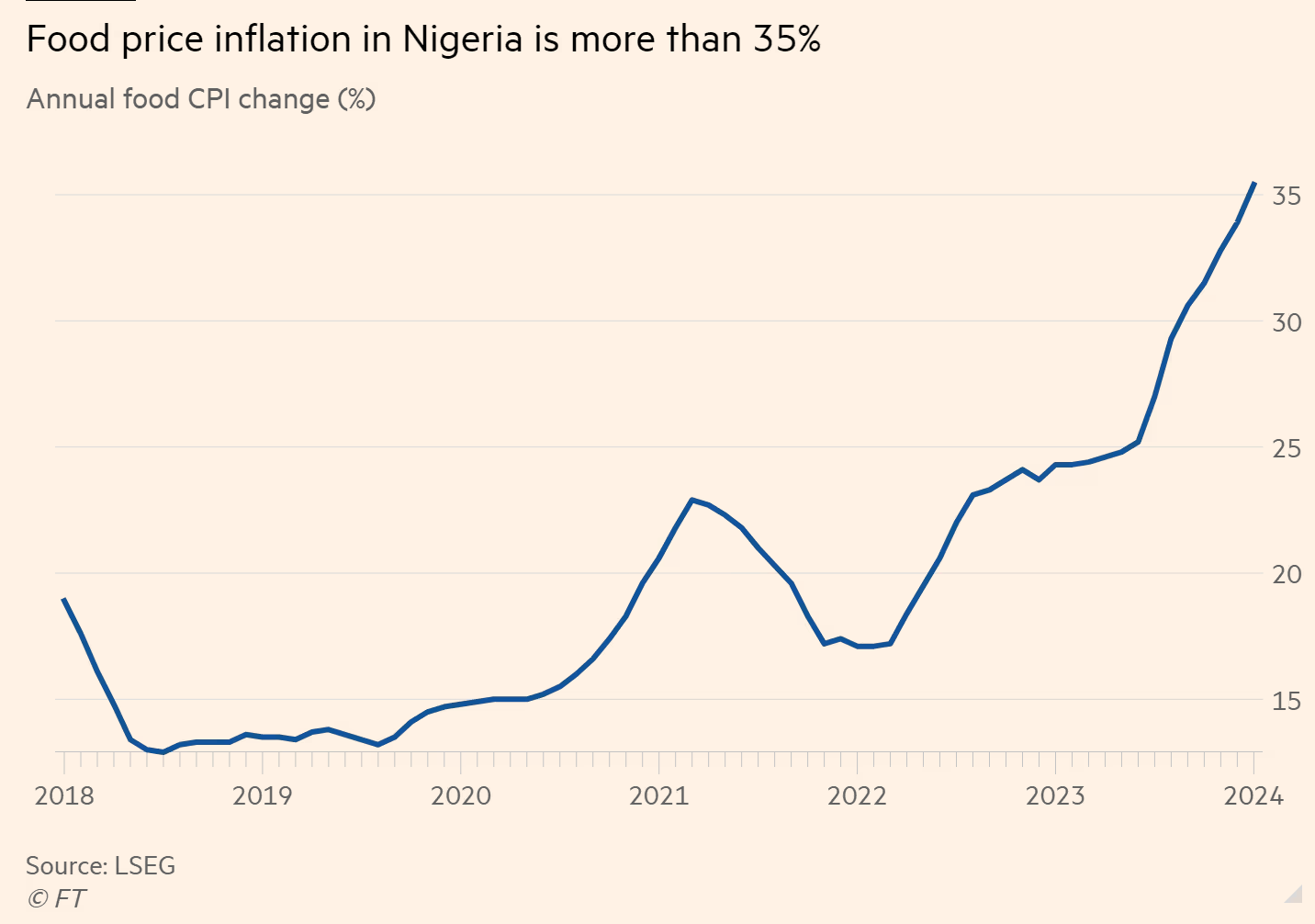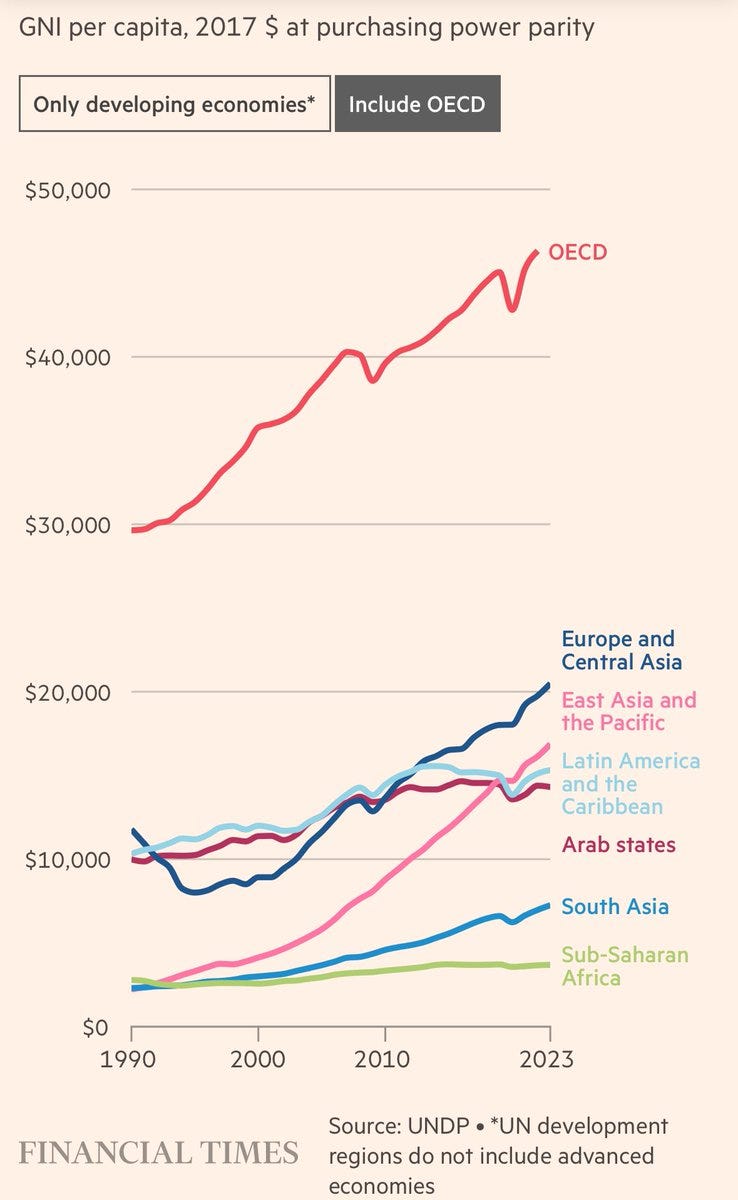Africa's Low Agricultural Productivity
Gender interventions will have the highest returns if they address regionally- and country-specific binding constraints. In Sub-Saharan Africa, the greatest obstacle to gender equality is not culture or institutions, but low agricultural productivity.
Poor yields mean low earnings for farmers and high city prices.
Tavneet Suri, Chris Udry and colleagues produced the graph below. Honestly, I think it’s one of the most important facts about humanity. Agricultural Total Factor Productivity Growth, in many African countries, has fallen.
TFP can increase through cultivating new lands and/or boosting inputs, like fertiliser and irrigation. After colonialism, agricultural output grew through extensification: expanding the agricultural frontier. But it has slowed. Obviously, this thwarts structural transformation - the major engine of gender equality.
Compared to other world regions, African cereal yields remain low.

Despite low productivity and meagre returns, over 40% of Africans work in agriculture.
In East Africa, the share of agricultural employment is even higher: 60%.
Low agricultural productivity also pushes up the urban price of food, making it even harder to manage on low incomes, or become globally competitive.
Struggling to survive, Kenyans and Nigerians have mobilised en masse. But even if governments were more responsive, they would still face the same structural constraint: low agricultural productivity.

Exports are also at risk. In Ghana and Ivory Coast, cocoa yields have been decimated by bad weather and disease. Just last week, the Financial Times reported that Ghana has only produced 500,000 out of 800,00 tonnes contracted to major processors.
Climate breakdown is partly to blame. Ariel Ortiz-Bobea and colleagues estimate that anthropogenic climate change has reduced Africa’s agricultural total factor productivity by about 34.0%.


Trapped in either back-breaking agriculture and saturated informal labour markets, everyday life remains extremely tough. This matters for gender: poverty and conflict exacerbate stress and intimate partner violence.
To advance gender equality, we need to tackle locally specific constraints. Based on the available evidence, I suggest that in Sub-Saharan Africa this is primarily low-agricultural productivity, which in worsens economic stagnation and conflict.











Great article! Ethiopia has recently experienced agricultural productivity gains ever since the TPLF took over. Part of this is due to the genius woman behind Ethiopia’s Modern Commodity Exchange - Eleni Zaude Gabre-Madhin.
https://ourworldindata.org/grapher/cereal-yield?tab=chart&country=OWID_AFR~Northern+America~ETH~NGA
I wrote about this here and Tyler Cowen shared my article on Ethiopia's agricultural growth below:
https://yawboadu.substack.com/p/ethiopias-economy-in-the-modern-day
It would be a great endeavor for other African countries to copy!
I'm skeptical of the data. I went to the USDA website, downloaded the data and analyzed. For example, according the the data, there has been no (zero) increase in irrigated in land in Kenya over the last 10 years. But considering all the work of Davis and Shirtliff, Futurepump and SunCulture that seems unlikely.
Furthermore, the summary seems to imply that all productivity has gone down. But actually productivity is up for crops. When you dive into the details, it's only animal productivity that is down. And where did that come from? nearly all the decreased efficiency came about due to increased capital stock, a 113% increase in capital formation in Kenya from 2011 to 2021. But when I go to the FAO website the increased capital formation in agriculture is about 35% over the same period.
I'm skeptical.